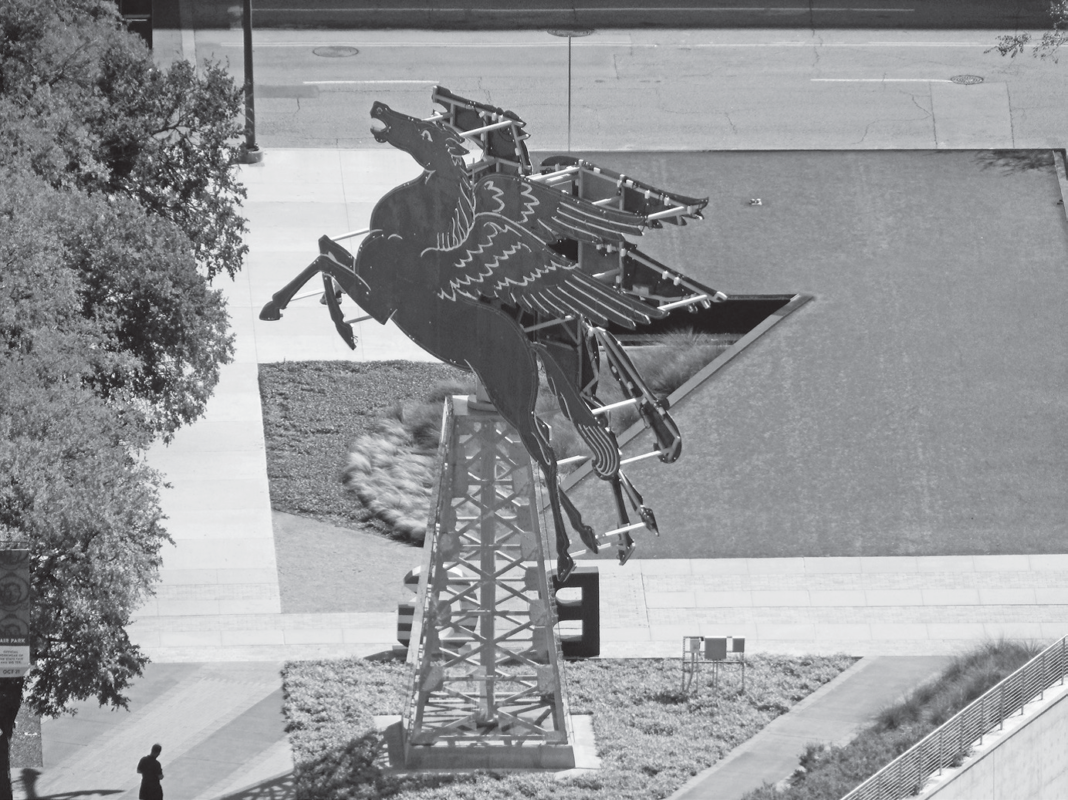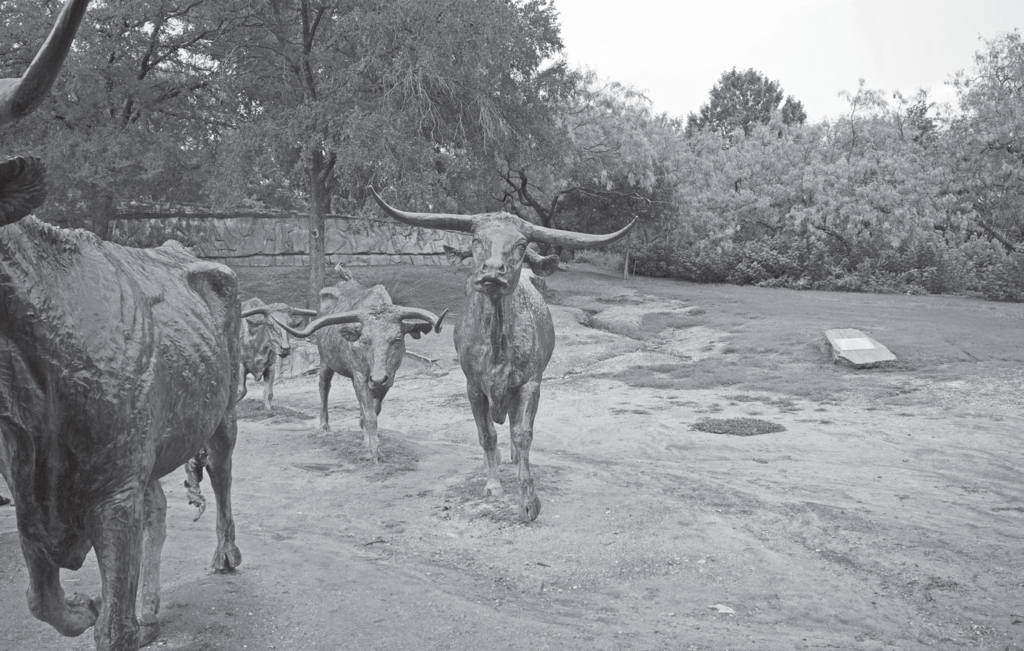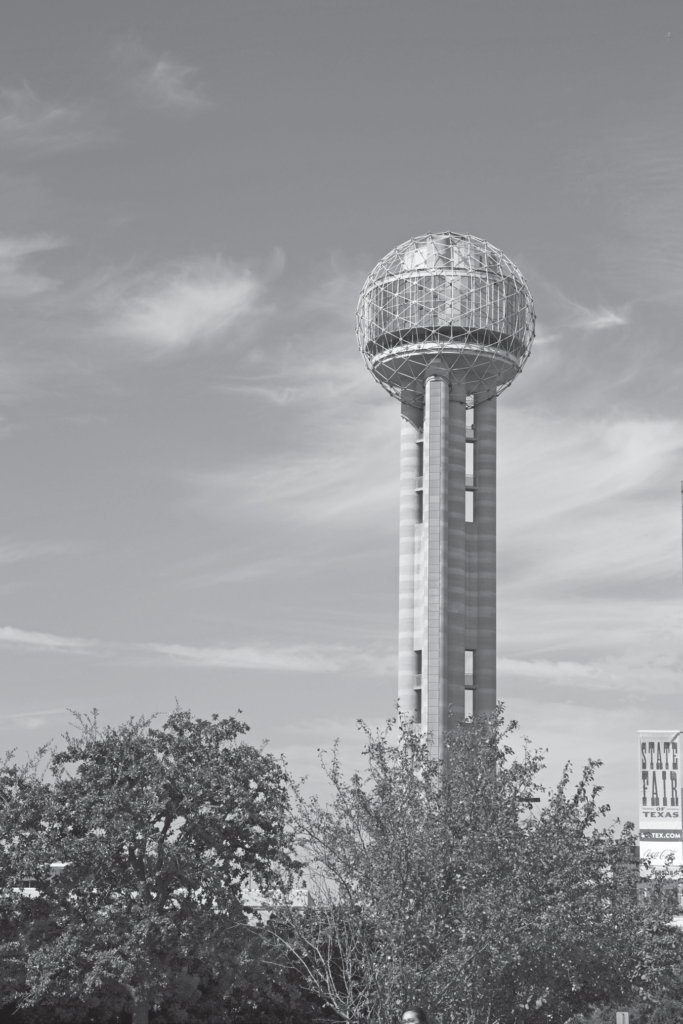
In 1839, John Neely Bryan, a frontiersman, left Arkansas to scout locations for his dream — a town on the Trinity River in North Texas. Despite the difficulty in enticing settlers, by 1844, the townsite of Dallas had been laid out in half-mile square blocks and streets. Dallasites still disagree on whom the city is named for — Commodore Alexander Dallas, a well-known naval hero, or vice president of the United States George Mifflin Dallas. However all Dallasites agree that their innovative, forward-looking city has an abundance of historic structures and sites.

Early Dallas
Pioneer Plaza is a four-acre public park with a stream and small waterfall. The popular site features the largest outdoor bronze sculpture in the world, and forty-nine bronze steers and three trail riders, commemorating the nineteenth-century cattle drives that traveled through Dallas. Adjacent Pioneer Park Cemetery contains the Masonic Cemetery, Odd Fellow’s Cemetery, Jewish Cemetery, and City Cemetery.

Boomtown Dallas
Old Red Museum of Dallas County History and Culture sits on land donated by Dallas founder John Neely Bryan and his wife, Margaret. In 1892, the Pecos red sandstone clad courthouse was built there, and dubbed “Old Red.” Following its addition to the National Register of Historic Places in 1976, restoration began on the beloved landmark. Today, Old Red is home to the Old Red Museum of Dallas County History and Culture.

Modern Dallas
Just like the Alamo in San Antonio, and the Astrodome in Houston, Reunion Tower is an iconic Dallas landmark. Built in 1978, the 561-foot tower features The Geo-Deck with panoramic views of all of Big D, and a rotating restaurant (very trendy in the 70s).
Artsy Dallas
Dallas boasts the largest urban arts district in the U.S. In fact, Downtown’s Dallas Arts District spans nineteen blocks and nearly seventy acres. The crowning jewel is The Nasher Sculpture Center. For decades, banker and developer Raymond Nasher collected art, and eventually built his own $70 million museum, designed by Renzo Piano and Peter Walker. Opened in 2003 ,the 55,000-square-foot interior blends with am adjacent two-acre sculpture garden. Today, the Nasher has over three hundred pieces in its collection.


